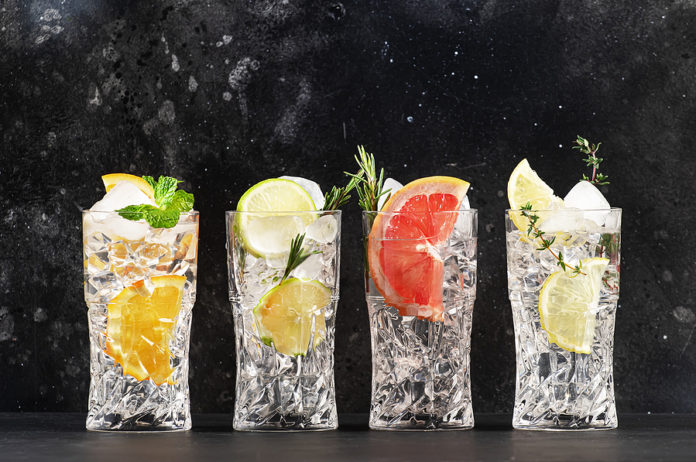
By Shalabh Shalabh, Chief Growth Officer at LatentView Analytics
Alcohol’s adaptation to wellness and sustainability requires a new CPG strategy
With scientific research suggesting that no amount of alcohol is technically good for you, hard-drinking baby boomers are giving way to more sober millennials and Gen Z consumers who temper alcohol consumption in the name of wellness. But the growing “sober curious” movement spells opportunity rather than doom for the alcoholic beverage brands that can present a new “better for you” face.
At first glance, health and wellness trends seem at odds with chugging a beer or taking shots of hard liquor. There has been a recent downturn in alcohol consumption habits despite an initial uptick at the start of the pandemic, with just 60% of U.S. adults surveyed by Gallup reporting that they drank alcoholic beverages in 2021 compared to 65% in 2019. Similarly, a NielsenIQ survey showed 22% of consumers reporting that they were cutting back on alcohol consumption for the sake of health and wellness in 2021.
But alcoholic beverage consumers are not going stone-cold sober for the most part. Instead, they’re looking for a balance between enjoying the alcohol buzz and diversifying their drink selection in line with a wellness and sustainability mindset. More consumers are also making “occasion by occasion choices” instead of only sticking with one category of drinks.
All these trends mean that consumer packaged goods (CPG) companies must look beyond milking their “cash cow” beer and spirit brands that still have mass appeal among alcoholic beverage consumers. Developing new “better for you” and “green” brands in the increasingly fragmented beverage market will require a more agile and localized approach to doing business.
Wellness bubbles to the top
The market turn toward “better for you” alcoholic beverages comes as more consumers favor functional beverages that support a wellness-first mindset. People are reaching for non-alcoholic sodas, sparkling waters, and energy drinks that promise cognitive and digestive health benefits through ingredients such as cannabis, prebiotics, probiotics, and postbiotics.
The lines are also blurring between traditional alcoholic and non-alcoholic beverage categories. There is a growing market niche for non-alcoholic versions of beers, wines, and spirits. But consumers generally seem to use these to supplement rather than outright replace alcohol — a 2021 NielsenIQ report found that 78% of consumers who buy no-alcohol beer, wine, and spirits are also still purchasing the alcoholic versions.
At the same time, alcohol is also becoming an ingredient of beverages that are considered healthier, such as seltzer and kombucha. This has meant growing opportunities for alcoholic beverage brands that promote “better for you” messages based on lower alcohol content, fewer calories, and sometimes functional wellness benefits.
The wellness trend has helped fuel the rise of hard seltzers that have eroded the market share of traditional alcoholic beverages like beer. Since its 2016 debut, the brand White Claw has risen to dominance in the growing hard seltzer market by appealing to younger, wellness-minded consumers with its gluten-free products that have low calorie counts and alcohol content. But it’s facing intensifying competition from second-place hard seltzer brand Truly and the fast-rising High Noon brand.
CPGs that have long dominated traditional alcohol categories are also adapting to the “better for you” trend. AB InBev has seen significant growth in what it identifies as the “beyond beer” category that includes brands such as Bud Light Seltzer, according to Beverage Daily. Meanwhile, Molson Coors rebranded itself from a “brewing company” to a “beverage company” as it looks to “expand beyond beer” through hard seltzer brands, even as it quickly discontinued its Coors Light Hard Seltzer experiment.
Other CPGs that have not typically tapped the alcoholic beverage market are also getting a taste. Starting in 2021, Coca-Cola joined forces with Molson Coors to debut hard seltzer flavors through its sparkling mineral water brand Topo-Chico. Similarly, PepsiCo teamed up with the Boston Beer Company (owner of the Truly hard seltzer brand) to develop a line of Hard Mountain Dew flavors that launched in 2022.
Beyond hard seltzer, both large and small companies are racing to develop new alcoholic beverage varieties tailored toward wellness-minded consumers. After achieving cult status for its non-alcoholic seltzers, Something & Nothing has launched a Spritz for the summer of 2022 that combines French wine with seltzer.
Because of the blurred lines between traditional beverage brands like PepsiCo and traditional beer or liquor brands like Budweiser and Diageo, there is increased competition. In fact, competition is being completely redefined and brands will need to learn to market to a different kind of consumer for different tastes and occasions. Sustainability is one area where brands can carve out a narrative that cuts across various consumers, especially younger generations that are being more selective about the alcoholic beverages they do decide to consume.
Distilling a sustainability message
While the wellness trend continues to transform the alcoholic beverage market, some companies have also been ramping up their environmental sustainability efforts in line with international efforts to address climate change. But most have not yet begun aggressively developing and marketing products that appeal to consumer interest in locally-produced, transparently sourced, and sustainable consumption.
This is a huge untapped opportunity, because there is a clear overlap between the wellness and sustainability trends as seen in the drinking habits of younger Gen Z consumers. Zoomers of legal drinking age often substitute no- and low-alcohol products for full-strength alcoholic beverages on certain occasions. At the same time, Mariana Fletcher, head of analytics and insights at IWSR, told Wine Industry Advisor that Gen Z is the consumer category with the highest proportion embracing “natural and environmentally friendly wines.”
In recent years, surveys have shown that consumers overall are increasingly willing to pay more for sustainable beer, sustainable wine, and sustainable liquor. Consumer research from IWSR has shown 48% of U.S. alcohol consumers indicating that sustainability or environmental initiatives factor into their purchasing decisions.
Small alcoholic beverage brewers and distillers have already leaped to the forefront on sustainability practices and messaging. The Finnish distillery Kosenkorva is a good example of this with its “Vodka from a Village” marketing campaign that emphasizes local farming practices. It has even developed a “climate action” vodka based on regenerative farming practices that store CO2 in the ground.
The sustainability messaging can also blend well with already established consumer interests in taste and wellness. Chicago’s Koval Distillery has long emphasized the meaningful difference in taste that can come from using organic grains to craft specialty spirits through a carefully sourced “grain-to-bottle” approach. Like many other small and independent distilleries and breweries, it’s focused on winning over consumers through authenticity and transparency about having sustainability at the root of its business.
The holistic brand transformation
Success in the increasingly diversified and fragmented alcoholic beverage market will look very different from past decades of profiting from cash cow brands. It will require constant evolution and innovation in appealing to younger consumers who want to mix full-strength and no- or low-alcohol alternatives. Traditional non-alcoholic beverage brands are increasingly encroaching into the territory of beer and liquor brands, requiring transformation at the level of brand perception and marketing.
While consumers sample an increasingly diverse range of alcoholic and non-alcoholic products while drinking and socializing, they are also gravitating toward beverage brands that offer holistic messages about being better for both people and the planet. New beverage lines that can create a compelling brand story based on wellness and sustainability -– and show receipts to back up their claims -– will stand out.
To remain relevant in this market, major CPGs need to refocus on developing innovative smaller brands, form new partnerships around no- or low-alcohol product lines, and identify up-and-coming brands with growth potential that can be acquired. If consumers are reaching for a growing array of different alcoholic and non-alcoholic beverages, CPGs want to be offering a similarly diverse array of product lines.
But shifting CPG business portfolios toward a more diversified set of smaller brands will also require internal organizational transformations. Large CPGs accustomed to banking on mass appeal brands will need the agility to rapidly innovate in anticipation of evolving consumer tastes and cultural trends.
For now, the global impacts of the pandemic and climate change will likely continue to drive wellness and sustainability trends in consumption habits. Brands and companies can rise to the challenge and thrive by showing how drinking alcohol in moderation need not be boring or meaningless.
 Shalabh is the Chief Growth Officer at LatentView Analytics. He is a seasoned business executive with 15 years of professional experience working with global consumer brands in CPG, retail, and financial services.
Shalabh is the Chief Growth Officer at LatentView Analytics. He is a seasoned business executive with 15 years of professional experience working with global consumer brands in CPG, retail, and financial services.








